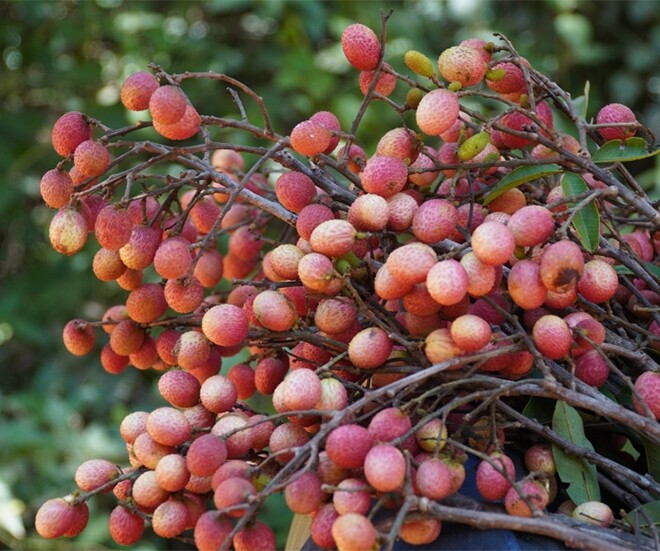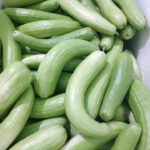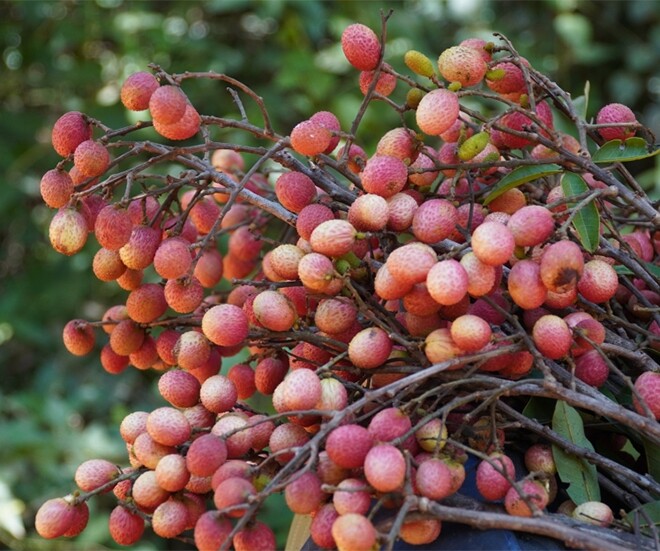
Red Wild Berries: An Giang’s Unique Delicacy
Once forgotten, these wild berries have now become a unique specialty that captivates both locals and tourists alike during the summer season.
Known as “trai truong” in Vietnamese, these berries grow abundantly in the wild forests of Bay Nui. In the past, locals considered them as mere snacks while foraging in the forest, with a sour and tart taste that was not particularly appealing. Despite the trees being full of ripe, red berries, they were often left untouched, falling to the ground. Only occasionally would passersby pick and eat them to quench their thirst, or children would treat them as a casual treat.
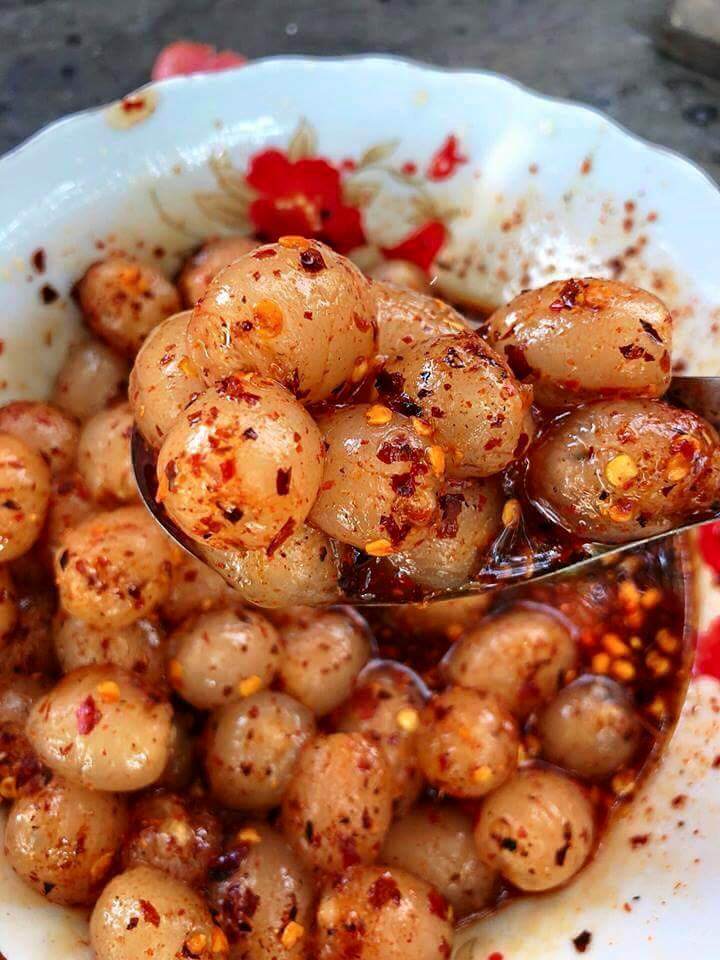
These berries offer a sour taste with a hint of sweetness
In recent years, these wild berries have experienced a remarkable transformation, gaining popularity among tourists, especially adventurous young explorers. Trai truong berries are small, about a third the size of regular lychees, with thin skin that can be either deep red or pinkish-white depending on the tree. The flesh is white, soft, juicy, and mildly fragrant, inviting curious tasters to take a bite.
The sourness of these berries is very refreshing, less sharp than that of tamarind or lemon, with a subtle sweetness lingering on the tongue. While some people might pucker their brows after the first bite, many find themselves reaching for another berry to fully explore this intriguing flavor.
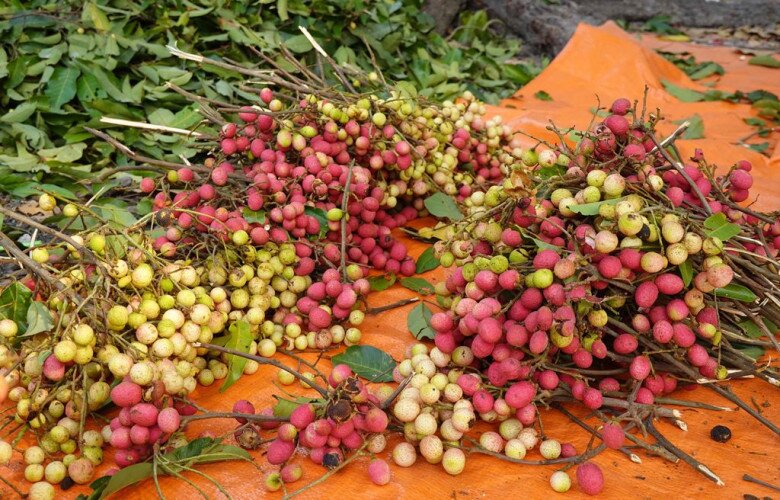
April marks the season for trai truong berries
Locals have come up with creative ways to make these wild berries more palatable and appealing. They are often mixed with sugar, salt, and chili, or blended with other fruits such as guava, star fruit, and plums to create unique snacks. Some beverage shops even use trai truong juice to craft refreshing drinks, offering a tangy, aromatic, and cooling experience during the hot summer days.
Unlike typical fruit trees, the trai truong tree is a wild, long-lived species found in areas like Nui Cam, Nui Dai, and Nui Co To, scattered throughout Bay Nui. To harvest the berries, one must venture deep into the forest, as the most fruitful trees are often over 30 years old. This tree species has a wide canopy and grows tall, sprouting new branches when cut, and taking about three years for new branches to bear fruit.
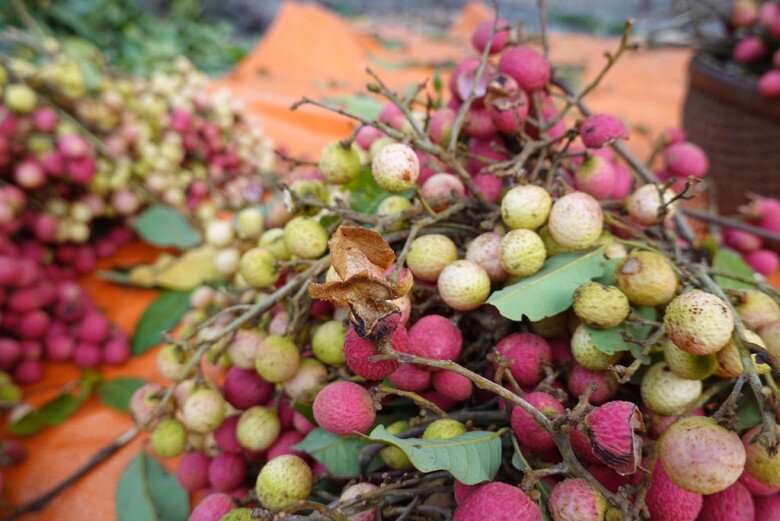
The trai truong berry season only lasts for two months
April marks the season for trai truong berries, and the harvest lasts for approximately two months. During this time, locals venture into the forests to pick the berries, both for personal consumption and to sell to traders. On the roads of An Giang and online markets, these wild berries can fetch prices as high as VND90,000 per kg. Their novelty and intriguing flavor profile make them a sought-after delicacy, often purchased as gifts for loved ones and friends.
Delicious Delicacy from Bac Ninh: Crispy and Chewy with a Versatile Twist
The humble bitter melon, known as “dưa gang” in Vietnamese, is not just a humble fresh produce in the province of Quế Võ, Bắc Ninh. The locals have mastered the art of pickling this bitter gourd, transforming it into a tangy, crunchy delicacy. This preserved treat is a versatile ingredient, perfect for a quick snack or as a key component in mouth-watering dishes such as Vietnamese herb salad or stir-fried pork belly.
The Ultimate Guide to Gia Lai’s Authentic Stinky Crab Noodle Soup: Top 5 Places to Indulge
If you’re traveling to Gia Lai with your family, you won’t want to miss out on the ultimate culinary experience – the infamous stinky crab noodle soup! In this article, we reveal the top 5 best places to indulge in this unique delicacy. Prepare your taste buds for an adventure like no other as we take you on a journey to discover the ultimate stinky crab noodle soup destinations in Gia Lai.


























